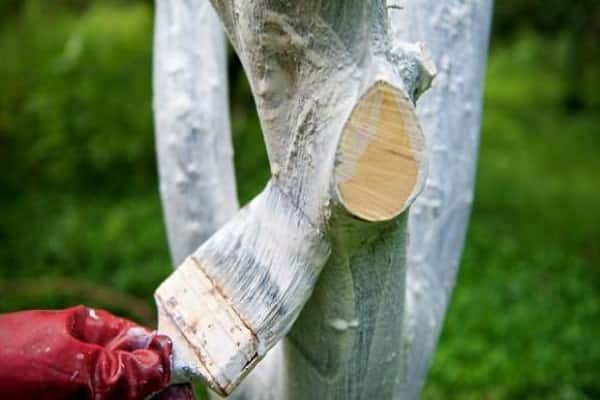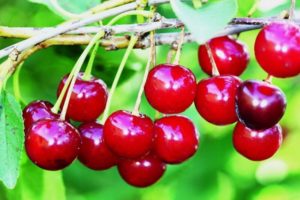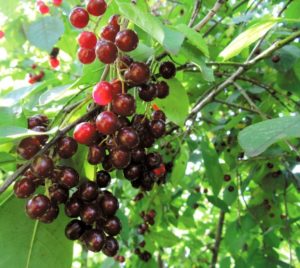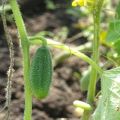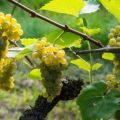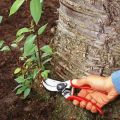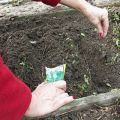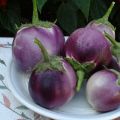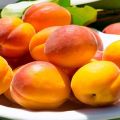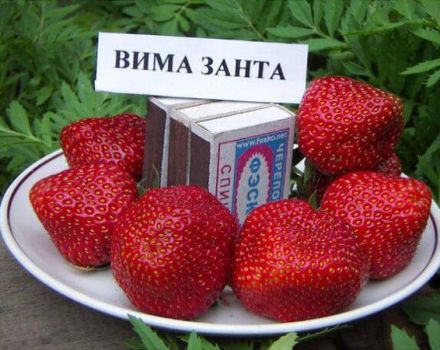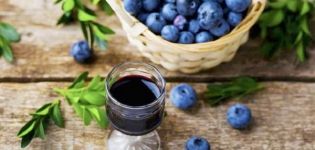Description and list of the best cherry varieties for the Leningrad region
The Leningrad Region has a climate that is not very favorable for growing fruit crops. It is not uncommon for gardeners to experiment, trying to determine which varieties to give preference to. Having familiarized yourself with the best cherry varieties for the Leningrad Region, their characteristics, features, it is easy to get a harvest.
Requirements for cherry varieties for the Northwest
Unfavorable weather conditions, with which nature often abounds, become an obstacle for gardeners to grow some fruit crops. So that experiments and experiments with trees do not end in failure, you need to familiarize yourself with the rules for choosing varieties for the northern regions.
When choosing plants for the northwest of Russia, pay attention to winter hardiness. If the tree is intended for growing in a warm climate, even a comfortable and warm cover cannot save it from freezing. Even some winter-hardy varieties will have to be covered at first, severe frosts can harm seedlings that did not have time to take root. Another rule is to choose only self-pollinating crops.
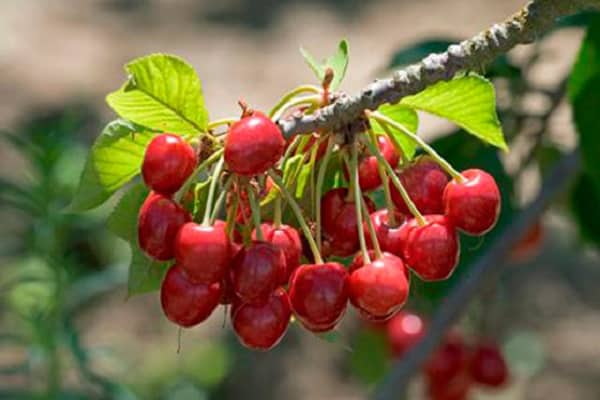
Vladimirskaya
Despite the emergence of new varieties, which breeders delight gardeners, cherry Vladimir does not lose popularity. A distinctive feature of the tree is frost resistance. This is not enough to survive the spring frosts, if the winter is long, there is a risk of frosting of the flower buds, which will affect the yield.
Benefits of Vladimir cherry:
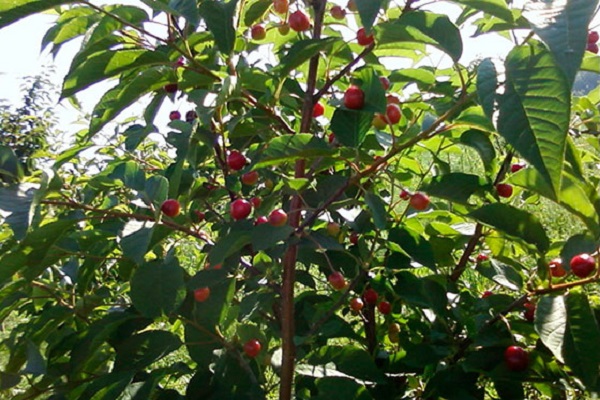
- disease resistance (it rarely affects rot);
- scab resistance;
- resistance to dry weather conditions;
- yield.
The buds begin to bloom in May, the first fruits ripen in July. Under favorable conditions and proper care, it is possible to get more than 5 kg of large fruits with small seeds.
The peculiarity of the plant is several trunks. It is recommended to be vaccinated, which will allow the crop to be grown as a single-stemmed crop.
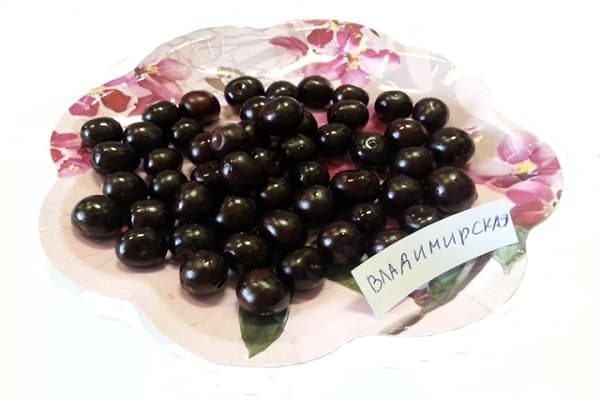
Ruby
The age of this cherry variety is 4 decades, for the first time the culture was presented by breeders in the 70s of the last century. Differs in high frost resistance, which is important for cultivation in the Leningrad region.
A distinctive feature of the plant is its resistance to moniliosis, although coccomycosis easily affects even mature trees with good immunity. Rubinovaya rarely exceeds 2.5 m in height. The presence of a dense crown allows you not to worry about the yield.
Flowering begins in May, fruiting dates are from early August to autumn. The disadvantage of the variety is poor transportability.When the stalk is removed, the juice appears abundantly, which reduces the storage time; the fruits must be used for immediate processing.
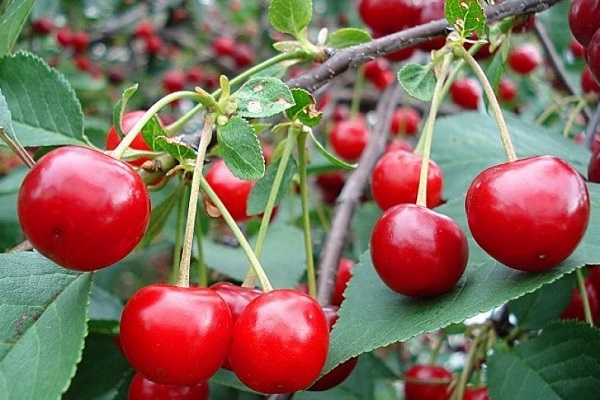
Star
One of the earliest varieties recommended for the Leningrad region. The buds do not freeze even in severe frosts, especially in mature trees. Cherry disease resistance is average, often the asterisk is affected by coccomycosis.
A tree grows in height up to 4 m. The crown is lush, with a lot of branches. Begins to bear fruit a few years after planting. You will need a pollinator, the tree is not self-fertile. It is recommended to grow cherries nearby so you don't have to worry about pollination.
A distinctive feature of the fruit is a sweet taste, the separation of the seeds will not be difficult. The berries are perfectly transported, used in canning, freezing, baking.
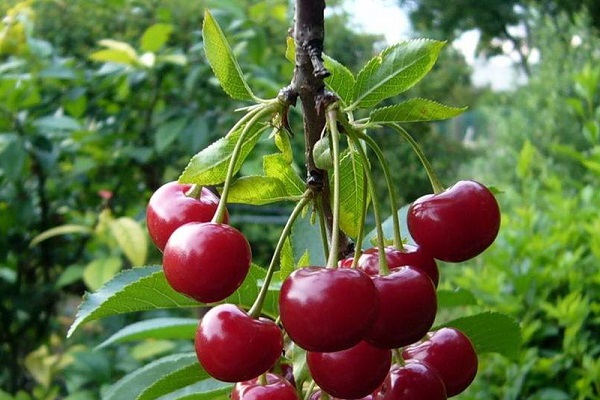
Lyubskaya
A plant that perfectly tolerates winter frosts, summer drought. Does not require regular maintenance, even rare watering will not affect the yield. No pollinators are required - the tree is self-fertile. The disadvantage is low immunity, which will affect diseases, the variety is easily affected by diseases dangerous for cherries.
The first harvest is recommended in early August. The fruits are quite large, they tolerate long-term storage and transportation well.
The problem may arise with freezing of flowers, the buds bloom early, often subsequent frosts destroy them completely. Grow only on light soils, nutrient-rich soils can affect yields.

Shpanka Shimskaya
The peculiarity of the plant is its high resistance to low temperatures. Even frost up to 35 degrees is capable of transferring the tree. Spring frosts are also not an obstacle to good fruiting. Gardeners will also like the unpretentiousness of the variety, there will be no special difficulties in growing. There is practically no need to fight diseases, the high immunity of Shpanki Shimskoy will protect against the most common cherry diseases.
The culture is tall, the tree can easily grow up to 6 meters. There is a small drawback, you will have to plant other varieties nearby, you will need pollinators.
Fruit weight exceeds 5 g, the berry shade is dark purple. Shpanka Shimskaya is of little use for commercial cultivation. The berries are poorly kept and are often damaged during transportation. Used in the preparation of preservation, freezing.
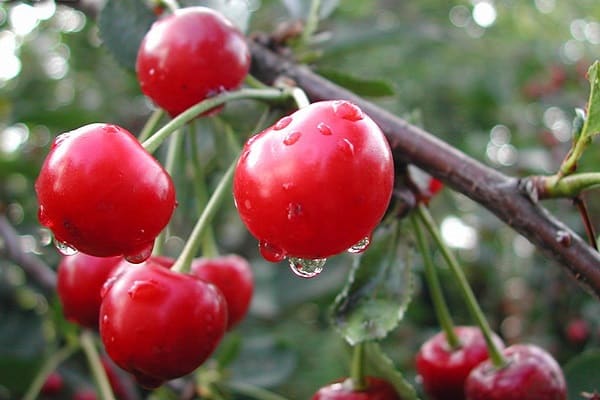
Amorel Nikiforova
A medium-sized (up to 3 m) spreading tree has many advantages - endurance, unpretentiousness, excellent frost resistance. Fruiting occurs 3-5 years after planting. If you take care of timely vaccination, it is possible to get a harvest in just 2 years.
Flowering falls in the second half of May, fruiting in July. Cherries are small (rarely exceed 3 g). The variety is not suitable for growing for sale; when the stalk is removed, a lot of juice appears, which affects the shelf life. It is recommended to carry out processing immediately after harvesting, even a short time is enough for the berries to start to deteriorate.

Crimson
The bred variety was recommended only for cultivation in the middle lane, but the winter hardiness that is the hallmark of the Crimson Cherry soon attracted gardeners living in more severe conditions. The height of an adult tree is not striking, rarely exceeds 2 m. The disadvantages also include self-infertility, pollinators will be needed.
The main value of the plant is early harvest. The first fruits can be harvested at the end of June. The berries are quite large, but not transportable. The fruits are used for processing - jam, conservation, baking.

Dessert Volzhskaya
The variety is recommended for cultivation in the Leningrad region. High frost resistance, resistance to diseases, late flowering, starting after the last frost, are the distinctive characteristics of Dessert Volzhskaya cherry.
The tree does not exceed 3 m in height and requires planting by a number of pollinators. After grafting, fruiting begins in just 2 years. Dessert Volzhskaya will delight you with its yield, from one plant it turns out to collect 10-12 kg of juicy fruits. It is recommended to grow for sale, the stalks are easy to remove. Despite this, shedding does not occur, each berry must be picked.

Zarnitsa
The variety thrives in cold regions. Practically not afraid of frost, easily tolerates spring frosts. Fruiting occurs early, 2-3 years after planting in a permanent place. Fruits appear only on annual branches.
The fruits are small, even in favorable weather they do not exceed 2 g. This is the main reason for growing a plant only for processing in the kitchen, one cannot expect high yields for sale. The variety is prized for its taste, juicy sweet fruits are great for desserts and jams.

Features of planting and caring for cherries in the Leningrad region
Even novice gardeners will not have any particular difficulties when planting young cherries and subsequent care. Planting is best done in spring, sending the seedlings to open ground in autumn will be fatal for the plant, it will not survive the first severe frosts. Cherry prefers light soil. It is recommended to prepare the soil mixture yourself, for this mix:
- humus;
- river coarse sand;
- rotted compost (often replaced with peat);
- sod soil.
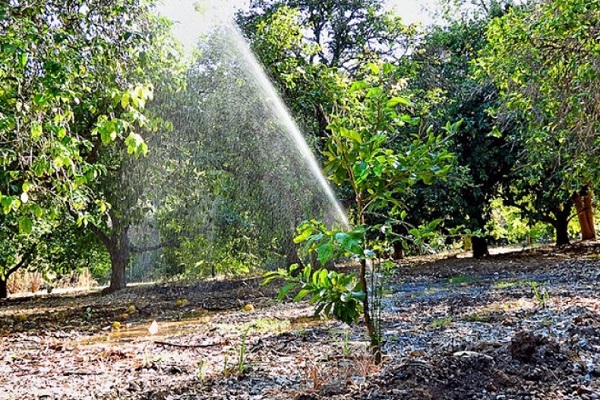
Take the components in equal parts; it is recommended to add wood ash (only 3-5 handfuls per plant). Be sure to complete planting by laying out a layer of mulch (sawdust, chopped needles, bark, straw).
Cherry care consists of the following processes:
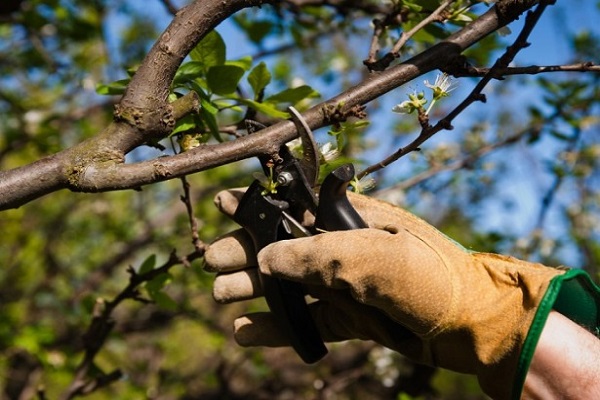
- Watering. Add only warm liquid as needed - in hot dry summers.
- Loosening the soil. To carry out loosening, at the same time removing weeds that are able to take nutrients from the soil, weakening the plant.
- Top dressing. It is recommended to fertilize mature fruiting crops. Give preference to organic matter (necessarily rotted), mineral compositions.
- Fighting diseases. When trees are affected by diseases, use chemicals that are sparing folk remedies may be powerless. Strictly comply with the requirements of chemical manufacturers, do not exceed the dosage, irrigate cherries using personal protective equipment.
For the winter, be sure to cover the cherries, even frost-resistant ones can suffer in severe frosts.
Cherry is a lush tree, which is considered to be the decoration of every garden. It is possible to grow a culture even in harsh conditions, it will take a little for this - to decide on a variety, make a little effort, follow the rules of agricultural technology. The plant will surely thank you for such care with delicious fruits.
